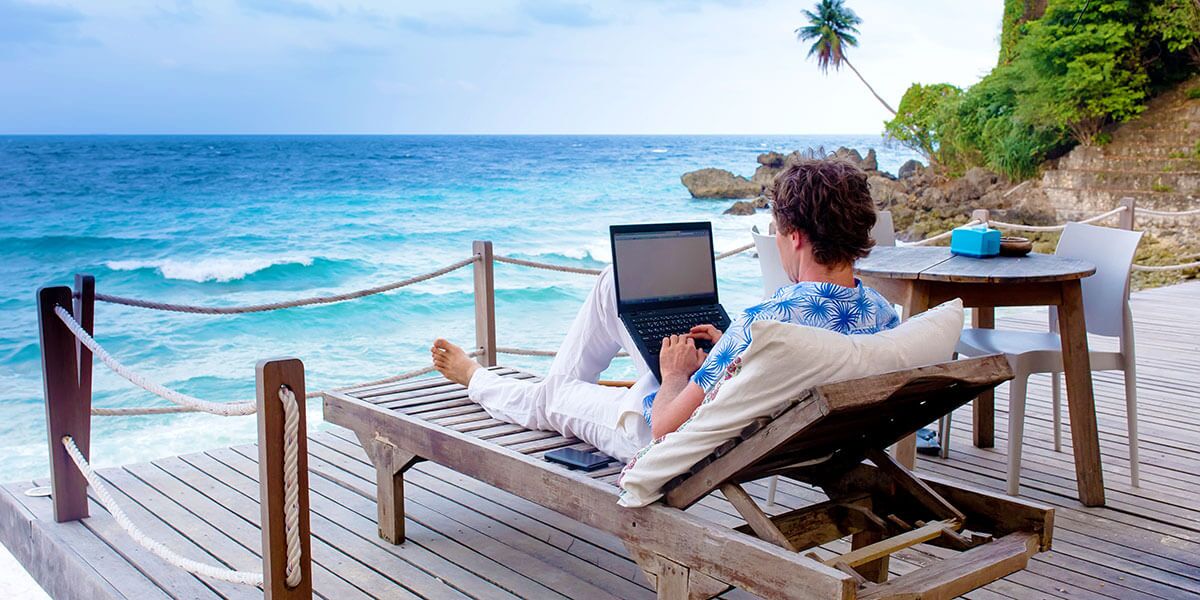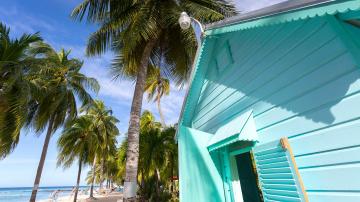
The digital nomads represent a new generation, nomadic, digitally-savvy traveller. They can work wherever they are, using telecommunications technology like the internet and their computer to conduct business. There are many countries that offer digital nomad visas. Croatia is one example.
The government is taking note of the growing popularity of the digital nomad lifestyle, and is working to accommodate it. Croatia's tourism minister believes in the benefits of the nomad movement. Her campaign promotes remote work in Croatia has been launched, for instance. Digital nomads have the option to apply for a residency permit (Croatia digital nom visa) (DNV).
Before applying for a digital nomad visa, you need to submit biometric data, such as your fingerprints and signature. Along with proof of residence, you will also need passport-sized photographs. Applications to the Ministry of Interior can be submitted beginning March 1, 2020. For applicants to be considered, you will need to complete Form 8a. Register online at the Ministry of Interior to apply for the digital nomad visa.
Croatia is home dozens of islands, many located near major cities. These islands offer peace, tranquility and beautiful nature. Brac, Hvar, Krk are some great islands for digital nomadics. Croatia offers rich culture and slower life pace.

In addition to launching the visa, the Croatian government has created a number of other initiatives for digital nomads. These include co-living spaces, and other coworking spaces. A digital nomad village is also available in Zadar.
Croatia's low costs of living are another attractive feature. Although it is a small country, the economy is growing making it an ideal destination if you are looking for a more sustainable lifestyle.
Many tourists are drawn to Croatia's beautiful beaches and charming villages. Croatia offers many outdoor activities, including kayaking, ziplining and hiking. Aside from the beach, many tourists also come to Croatia to experience the islands.
Dubrovnik is a popular destination for digital nomads. This beautiful city has become a tourist magnet for both locals and foreigners. As a result, there are more than a handful of digital nomads based there.
Split, Zagreb, Osijek and Zagreb are some of the other cities that draw digital nomads from Croatia. These cities have a good infrastructure and are all affordable, making them great for digital nomads.

Croatia's Dinaric Range has stunning scenery and craggy summits. There are waterfalls and river canyons as well.
Aside from Croatia's beaches, its island destinations are excellent for those looking for a digital nomad getaway. While these islands are within easy reach of larger cities, their remoteness is due to the Dinaric Range's natural beauty.
Croatia has a wide range of accommodation available to suit any budget. These include luxurious villas or affordable apartment rentals. There are also quiet homes in the countryside and penthouses.
FAQ
What is the digital nomadic lifestyle?
A digital nomad is a person who lives in constant motion. They can be mobile, flexible and mobile all the time. They can live anywhere with a laptop, an internet connection, and a reliable way to recharge their batteries.
They travel for work or pleasure and use the internet wherever they are. They travel for weeks in their suitcases, moving from one country to the next without thinking.
Our future is in the hands of digital nomads. They are the generation that doesn't own land or a house. They are the generation that grew-up playing online video games.
The digital nomads are the future generation of travelers. They are the ones that are going to change how we travel forever.
How do digital nomads get paid?
Upwork, Freelancer and other digital nomad job sites are great resources for remote jobs. These sites also make it easy to find freelance clients.
They help you to create a portfolio and showcase your skills. They give feedback and keep track of which projects you have completed.
There are many online tools and applications that can help you organize your time, communicate effectively with potential employers, and automate tasks.
There are also dangers. When searching for work, you might encounter fake profiles or scams. Some freelance platforms charge fees without providing any value to the client.
You could receive bad reviews from previous clients. You might even fall prey to identity fraud.
These problems can be avoided by carefully reviewing the site before signing up. Seek out testimonials and reviews. Do not hire an employer that has not vetted the applicant.
You should be cautious of scammers working remotely as you will never be able to meet them face-to–face.
If you are patient, you will not encounter major problems.
Which jobs do digital nomads typically do?
A digital nomad travels for work and usually stays between two cities. They live in suitcases and travel to the job. Their lifestyle is very flexible, so they can choose when and how much time they spend working. Digital nomads are able to work from anywhere in the world, even remote areas like deserts, forests, mountains and islands.
Most common work includes writing, web development and software engineering.
Many digital nomads work remotely and travel. This allows them the freedom to choose their own location and save money. Many digital nomads also prefer to travel alone. Some others find it easier connect with local communities as they aren’t tied to any specific place.
Do digital nomads make a lot of money?
Digital nomadism is an intriguing phenomenon. You can travel for up to six months at a stretch. Some believe it's the future of work. Some people think it's a fad. But whatever side you fall on, there is one thing we can agree on; it's certainly made its mark.
The number of people who work remotely has increased tremendously since 2008. FlexJobs' study found that remote workers have outnumbered traditional office-based employees.
But how much can digital nomads really make? It depends on what type of job you have, where you live and if you are self-employed.
Nomadic Matt claims that he makes between $10-20k per month. However, this figure includes his income from blogging as well as speaking engagements and consulting gigs. These jobs, he says, aren't sustainable as they require too much work. He mentions that about 80% is spent traveling.
The good news is that living in Thailand will allow you to make more than most Americans. Expatistan reports that the average monthly salary in Thailand is USD 4,000. This is almost double the US median salary.
You'll also earn more and pay less for housing. You should seriously consider moving abroad if you're thinking of it.
Where do digital nomads often stay?
These destinations are especially popular in Southeast Asia or the Caribbean as digital nomads. But there are also places where you could live for months without leaving the house.
A digital nomad's best choice is where they feel most content. This may mean somewhere warm and tropical or anywhere else on Earth where they can find inspiration.
But while digital nomads are often drawn to these locations because of the weather, they tend to stick around longer when they can afford to pay rent.
Digital nomads travel light, and spend more time outdoors than any other group. They should ensure that the destination offers an abundance of outdoor activities.
These include skiing, kayaking, hiking, kayaking, skipping, diving, fishing, mountain biking and horse riding.
They love cities too and would happily move to any city that provides access to nature.
If you live in a suitcase, it is important to find a place where wifi can be easily connected. This is why you should avoid areas that have poor signal.
Hostels are a great way to avoid such problems. These hostels often offer internet access, and sometimes accommodation.
Digital nomads are at ease in hostels because they can pack light and keep costs down. Hostels are social spaces that allow you to meet new people.
Most hostels have communal kitchens and common spaces where guests can meet up. There are also laundry facilities, bike rental, tours, and many other opportunities to explore the area.
What's a day like for a digital nomad looking to travel?
A typical day for a digital nomad will vary depending on their location. It could include:
-
Set up new logins and accounts
-
Creating content (blogs, articles)
-
Researching new markets
-
Meet new people
-
Finding new opportunities
-
Negotiating contracts
-
Working on projects
To be a digital nomad you need to master how to handle all the aspects of your daily life.
That means creating a schedule that allows you to finish everything while enjoying yourself.
For example, perhaps you have a morning routine of checking email, scheduling meetings, and answering emails. After lunch, you might take a few hours to unwind.
After dinner, you start your evening routine. This involves reading blogs, checking social networks, and writing blog posts. The rest of that night is yours.
You won't feel overwhelmed, and you can maximize your productivity all day.
How can I stay safe as a digital nomad?
In reality, you'll never stop living online because it's where you meet most of your friends and family. However, you won't have to be confined to an office as a digital nomadic. How do you balance safety and travel?
First, make sure your computer is virus-free. This means that you must install the latest Windows and Mac OS X updates and keep them up to date.
It is also important to make sure your software is the most recent version. If it isn't, update it immediately. If your cloud services, such as Dropbox, iCloud and Box, stop working properly, you may be locked out files.
VPN (virtual private networks) protects your internet connection when you are away from home. It is possible that your ISP will charge additional for data usage overseas. Therefore, it is worth checking if you are eligible for a free trial.
VPNs protect your privacy by encrypting your web traffic. This makes it more difficult for hackers and other malicious actors to intercept your personal information. Consider downloading a VPN app to your mobile device if you are connecting to public WiFi networks.
Make sure you have your phone charged. You could save hours searching for someone you lost your passport or wallet by having your contact details available.
Statistics
- The fees range from 5% to 20%, depending on how much you make working for a specific client. (travelinglifestyle.net)
- All it takes is a 5% better profile and proposals than your competitors. (travelinglifestyle.net)
- Surprisingly, according to the online quote, our 60-year-old will pay the same cost for both packages for three months in Finland. (travelinglifestyle.net)
- In general, you can expect to pay around 5 to 10 percent of the total cost of your trip for travel insurance. (travelinglifestyle.net)
- LifeStraw makes ones that remove 99.9% of bacteria and parasites, keeping you safe as you travel the world. (nomadicmatt.com)
External Links
How To
How to get Free WiFi All Over the World
Although you won't find WiFi everywhere, there are plenty of hotspots. These are some spots around the world that offer free Internet access.
-
Starbucks offers free Wi-Fi at most locations. Look for the "WiFi Sign" near the cash register.
-
Airports generally offer Wi Fi at no additional charge. Many airports offer charging stations for laptops.
-
Some hotels offer free Wi-Fi. Look for signs near the front desk advertising their free service.
-
Access to the Internet is free in many public libraries. Just show your library card to gain access.
-
Nowadays, most restaurants offer Wi-Fi at no cost. You can ask for the password upon your arrival.
-
Many trains have Wi-Fi free of charge. Enter the train station's name into Google Maps and click search.
-
Many universities now offer free wireless connections. Look out for the icon labeled "Wireless" on the network icons.
-
Even though zoos might not appear like places where you can enjoy free Internet, many offer this perk. You can find the logo to indicate free Wi-Fi.
-
Free Wi-Fi is almost always available in museums. Outside the museum entrance, look for a kiosk or information booth.
-
Trade shows and conventions often provide free Wi-Fi during business hours. You will find signs advertising Wi-Fi availability at the event.
-
Many churches offer free internet access to their members. You can find the notice at the church.
-
Sometimes gas stations offer Wi Fi at no charge to customers. Look for the "Free Wi-Fi" sign located near the pumps.
Additionally, here are five tips for getting connected:
-
Avoid public areas. Public Wi-Fi networks are usually password-protected and require payment. If you are required to connect, look for a private network.
-
Use a VPN App. VPNs protect internet traffic and let users access their favorite websites without worrying about being tracked. VPNs are especially helpful when connecting to public hotspots as they conceal your location.
-
Look for unsecured connections. Anyone can join unsecured networks. These networks are much easier to use than secured ones. They aren't as secure, however, as encrypted networks.
-
Join a community. Free Internet access is available in some communities at local coffee shops and libraries as well as hotels and other venues.
-
Bring your own device. To avoid roaming charges, most airports offer free WIFI.